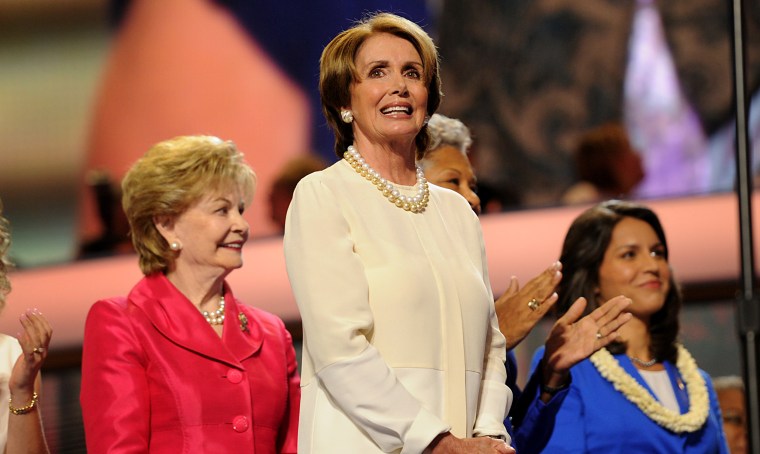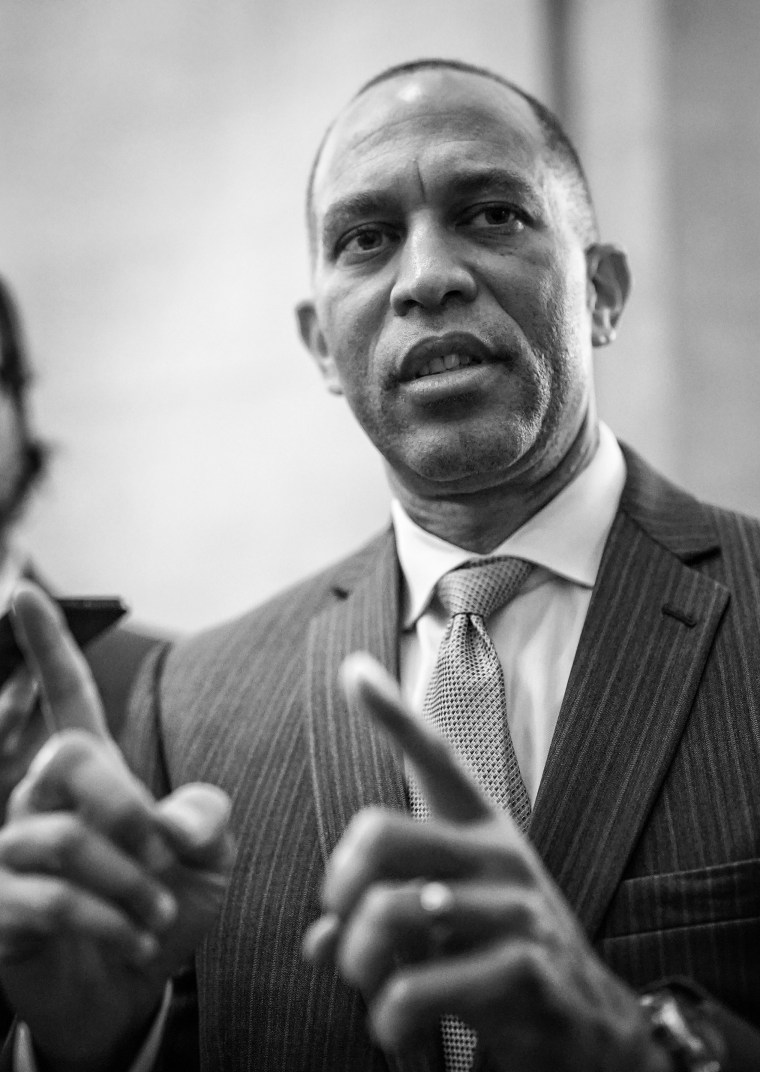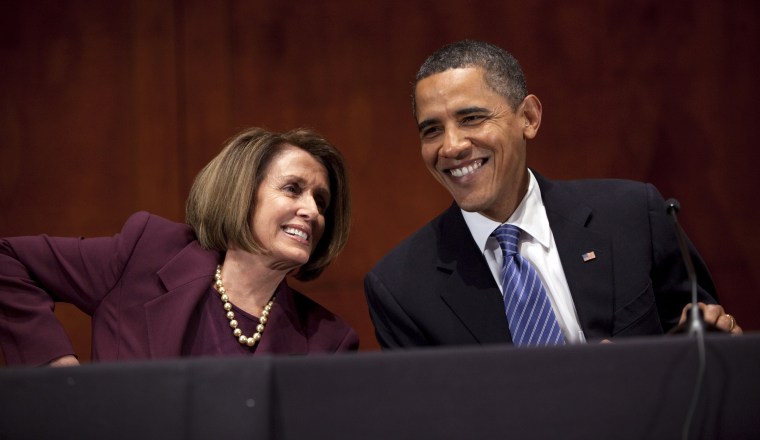Nancy Pelosi, the first female speaker of the House, says she’ll step down as Democratic leader
Nancy Pelosi #NancyPelosi

Colleagues have long pointed to her upbringing in old-school city machine politics — she kept a “favor file” for her father — to explain what often seemed like an innate sense of how to reward, punish and cajole them to win support in leadership elections and on the legislative battlefield.
In her speech Thursday, Pelosi referred to her first trips to the Capitol with her father, Thomas D’Alesandro Jr., when he represented Maryland in the House. “When I first came to the floor at 6 years old, never would I have thought that someday I would go from homemaker to House speaker,” she said.
Rep. Brendan Boyle, D-Pa., said: “She is the single best at the inside game that I’ve ever seen or served with. She remembers every time a person has been with her on a vote and every time a person has been against her, and that memory is very important in that type of a position.”
The fear of reprisal is one reason Pelosi hasn’t been seriously challenged in a leadership election since she first won the post of Democratic whip over Hoyer in 2001. Since 2003, she has been her party’s leader in the House, the longest streak in either party since Speaker Sam Rayburn, D-Texas, who died in 1961 after 25 years running his party.
“For a woman, she’s opened the doors wider for every last one of us,” said Rep. Debbie Dingell, D-Mich., who grew emotional talking about Pelosi. “And it’s not pleasant being on the other side of her, but I thank her for everything that she’s done.”
 House Minority Leader Nancy Pelosi at the Democratic National Convention in Charlotte, N.C., in 2012.Daniel Acker / Bloomberg via Getty Images file
House Minority Leader Nancy Pelosi at the Democratic National Convention in Charlotte, N.C., in 2012.Daniel Acker / Bloomberg via Getty Images file
Early in her career, Pelosi demonstrated a rare touch for influencing colleagues.
When former Rep. David Obey, D-Wis., a progressive, launched a campaign for the chairmanship of the Appropriations Committee in 1994, Pelosi helped him whip votes to win the gavel, even though he was not the most senior member of the panel. The key, he said, was her knowledge of members’ interests and personalities.
“She had a book on everybody in her mind,” Obey recalled in a telephone interview Thursday. “She understood what made each member tick.”
Obey, who would return the favor by supporting Pelosi’s leadership bids, called her “virtually irreplaceable.”
But Pelosi’s longevity ultimately became a liability. Before the midterm elections, some of her fellow Democrats, including moderate Reps. Elissa Slotkin of Michigan and Abigail Spanberger of Virginia, openly called for fresh blood in the ranks of party leadership.
The calls continued in the days after the election — even with control of the House undecided.
“Whether we hold the majority or lose it by one to five seats, it’s time for a new generation of leadership. Period,” Rep. Dean Phillips, D-Minn., said shortly after the midterm elections.
The race to succeed Pelosi, as Democrats settle back into the minority after modest losses in this month’s midterm elections, is expected to feature a series of next-generation candidates. Hakeem Jeffries of New York, 52, the Democratic Caucus chairman, has been considered Pelosi’s heir apparent, and he would become the highest-ranking Black lawmaker in history if he were to win.
 House Democratic Caucus Chair Hakeem Jeffries, D-N.Y., at the Capitol on Thursday. Frank Thorp V / NBC News
House Democratic Caucus Chair Hakeem Jeffries, D-N.Y., at the Capitol on Thursday. Frank Thorp V / NBC News
Pelosi has not indicated whom she would like to replace her as leader. Hoyer and Clyburn both endorsed Jeffries on Thursday. Hoyer called him “a skilled and capable leader who will help us win back the majority in 2024” and said “he will make history for the institution of the House and for our country” if he is elected leader. Clyburn also endorsed Reps. Katherine Clark of Massachusetts and Pete Aguilar of California for the No. 2 and No. 3 leadership spots, respectively.
Pelosi led Democrats to their first majority in a dozen years when they caught a blue wave in the 2006 midterm elections. Her colleagues rewarded her by making her speaker, a position she used to highlight America’s struggles in the Iraq War and the Bush administration’s role in the 2008 housing and finance industry crisis.
When Obama won the presidency that year, Pelosi and House Democrats expanded their majority. With newfound power and a Democratic Senate, they delivered an economic stimulus package, the so-called Dodd-Frank Wall Street regulations and the centerpiece of Obama’s agenda, the Affordable Care Act. Pelosi was particularly instrumental in squeezing the latter program into law, negotiating among centrist Blue Dog Democrats, her party’s dominant progressive wing and the bishops of her own Roman Catholic religion.
 Speaker of the House Nancy Pelosi and then-President Barack Obama in 2010.Evan Vucci / AP file
Speaker of the House Nancy Pelosi and then-President Barack Obama in 2010.Evan Vucci / AP file
“Somebody asked me if this was a victory for Barack Obama. It’s not. This victory belongs to her,” Rep. Louise Slaughter, D-N.Y., the chairwoman of the Rules Committee at the time, said when the first version passed in the House. “As far as I know she never sleeps nor eats.”
The backlash to Obamacare helped Republicans knock Democrats out of power in the 2010 midterm elections, but Pelosi, with a smaller and more progressive caucus, held on to the reins of the party. She did it despite having been featured in millions of dollars of advertising against House Democratic candidates.
Eight years later, after Trump and Republicans tried to repeal Obamacare, she led Democrats to a midterm victory and was restored to the speakership.